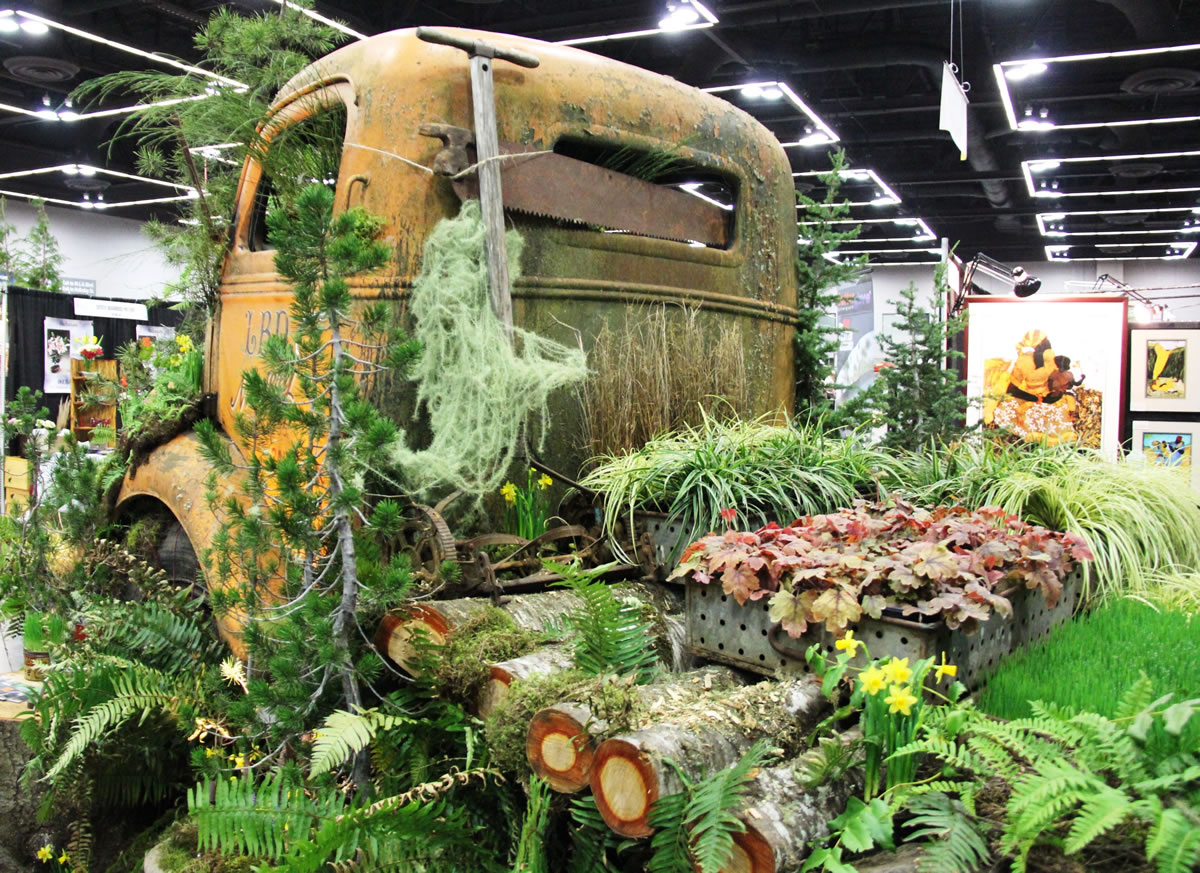We are a month away from spring and I’m already spellbound. In February, three of the largest garden-oriented events in the Pacific Northwest draw capacity crowds by conjuring up spring from the remnants of late winter. At these events, daffodils and tulips bloom a full month ahead of schedule. Bare branched cherry trees and late season magnolias break into full flower months before their time.
What these garden shows do is showcase the possibilities available to the Northwest gardener. We can all appreciate the effort and ingenuity it takes to put together such a show for our enlightenment. The palette of plants used in the demonstration gardens are chosen for their adaptability to our weather and climate zones. Just remember, in your home garden these plants will not all bloom at the same time.
We can still take a serious look at the individual plants offered in the demo landscapes and we can decide which ones we would like to add to our own gardens. At the Yard, Garden and Patio Show, many beds and borders were filled with hellebores. This is one group of perennials that actually has begun to bloom in our gardens over the winter months and that will continue well into the spring season.
Another favorite Northwest perennial I noticed was pulmonaria, also called Lungwort or Bethlehem sage. These, too, will soon come into bloom in dramatically bright blues and pinks, often carrying both colors on the same plant. Pulmonarias are foliage plants, known for the dappled pattern of silver white coloring on pale to deep green leaves. The foliage of ‘Milky Way’ (Pulmonaria saccharata) is dusted with tiny white spots like stars in the sky. ‘The Leopard’ has larger, more evenly spaced markings.
One plant that was used in many of the designer gardens is also one of our most common garden shrubs. Pieris, also known commonly as andromeda (Pieris japonica spp.) is lovely in our gardens at this time of year. Flower clusters are draped like strands of pearls from the end of every branch. These clusters hang on patiently from late fall through winter. In early spring each pearl opens to reveal a miniature bell in pale cream, white or shell pink. New spring growth is so vibrant that some common pieris names are ‘Valley Fire,’ ‘Mountain Fire’ and ‘Flaming Silver.’
The Mediterranean heathers in white or pink are lovely if used in the right context. Their low, mat forming profile is perfect for the edge of a border or planted on either side of a sidewalk entry. Heath and heather varieties grow in an array of forms from small, evergreen clumps to taller shrubs with flowers that dangle like ruby red bells. Many are grown for their changing foliage color as much as for their seasonal flowers. ‘Robert Chapman’ glows fiery orange in late fall and the new growth of ‘Dawn’ (Erica darleyensis) is golden yellow.
Color on full display
Another common plant that excels in demonstration as well as home gardens is cotoneaster. There are many forms, one of my favorite being horizontalis with its herringbone patterned branches. Cotoneaster dammeri is a low growing, evergreen ground cover. All of them are good at smothering weeds. In spring the cotoneasters are covered with countless petite white flowers. Every one of these flowers will become a bright red berry and many of them hang on long enough to add color to the garden in wintertime.
For a bold splash of voluptuous, early spring color in a flowering tree, try the ornamental plum. In full flower these trees emblazon the streets of established neighborhoods with a mass of saturated pink springtime bloom. As if to highlight the bright flower color, new spring foliage unfurls in deep shades of copper-toned purple. The combination is striking, a natural lesson in using color contrast in the garden. Prunus cerasifera ‘Thundercloud’ is the smallest street plum, perfect along driveways and sidewalks. Prunus x blireiana is a profuse, double bloomer.
Spring events and designer demonstrations aren’t trying to trick us into believing that everything we see in the demo garden is happening in the real world. Fortunately, we go into these events knowing that much of what we see is not exactly real. But even if Oriental lilies never flower in your garden in March, they are well worth adding to the garden now for the late summer flower show. The most important thing that garden shows do is to help us understand that imagination is the first step in creating the garden of our dreams.
Robb Rosser is a WSU-certified master gardener. Reach him at Write2Robb@aol.com.



